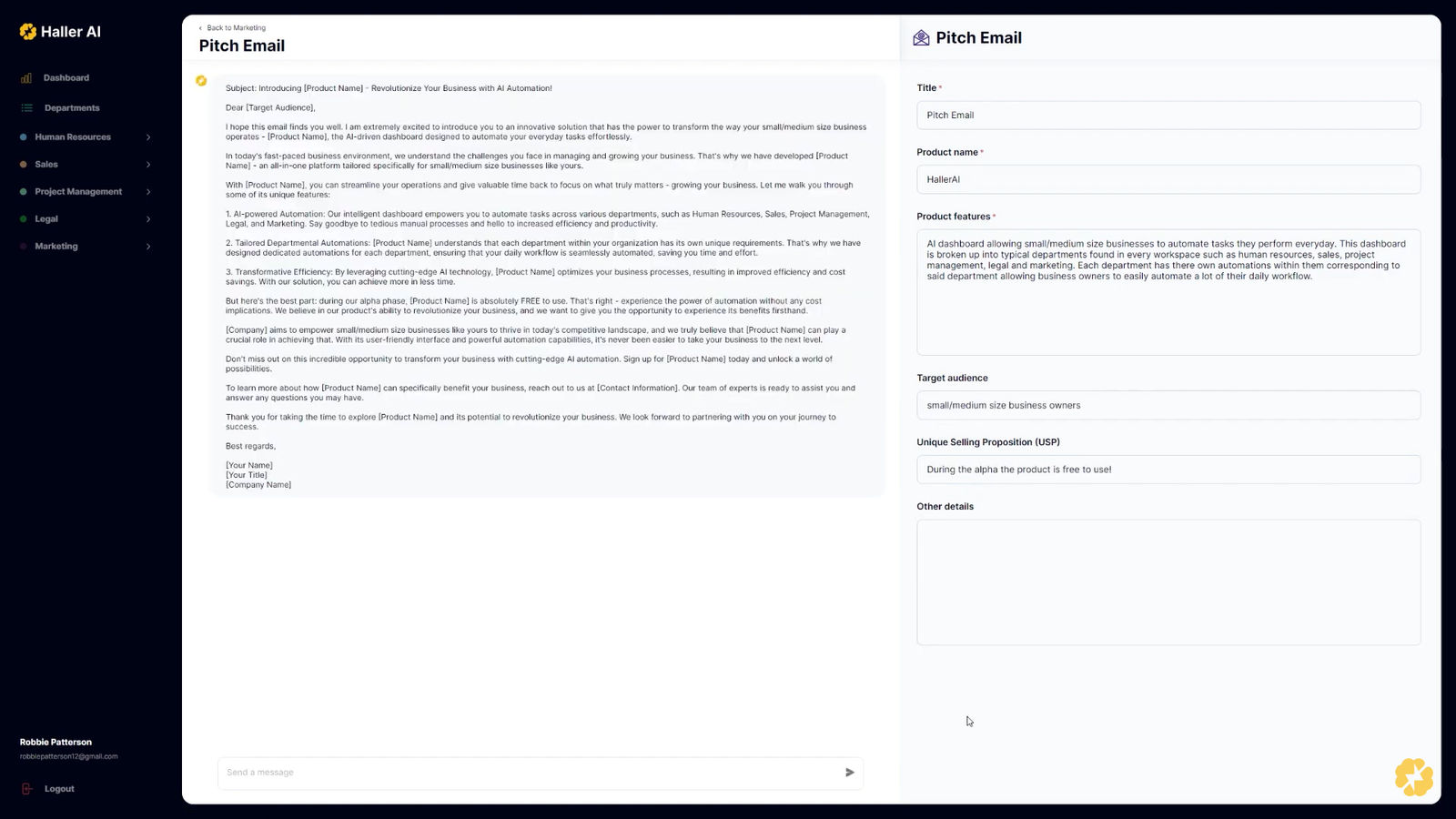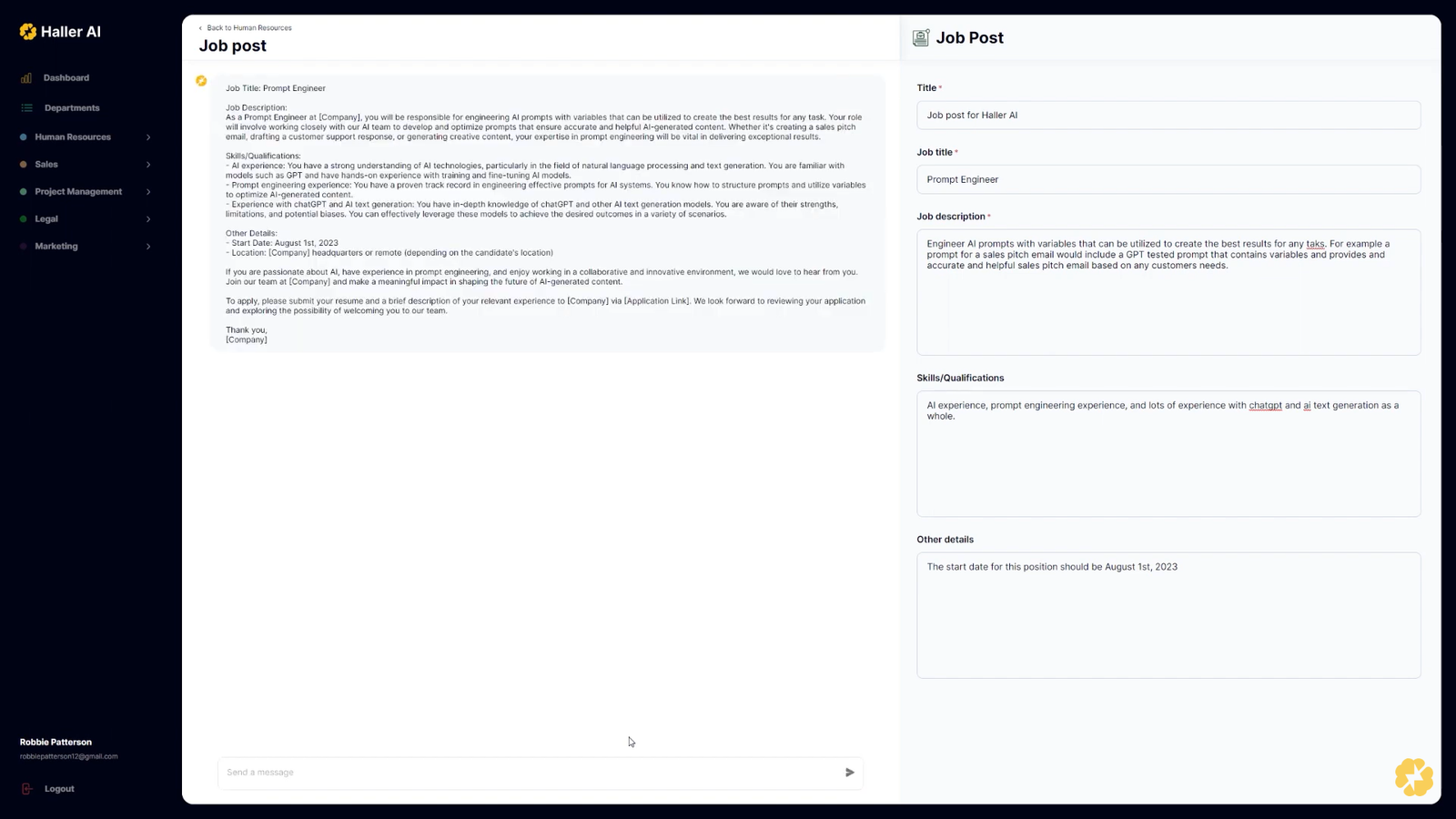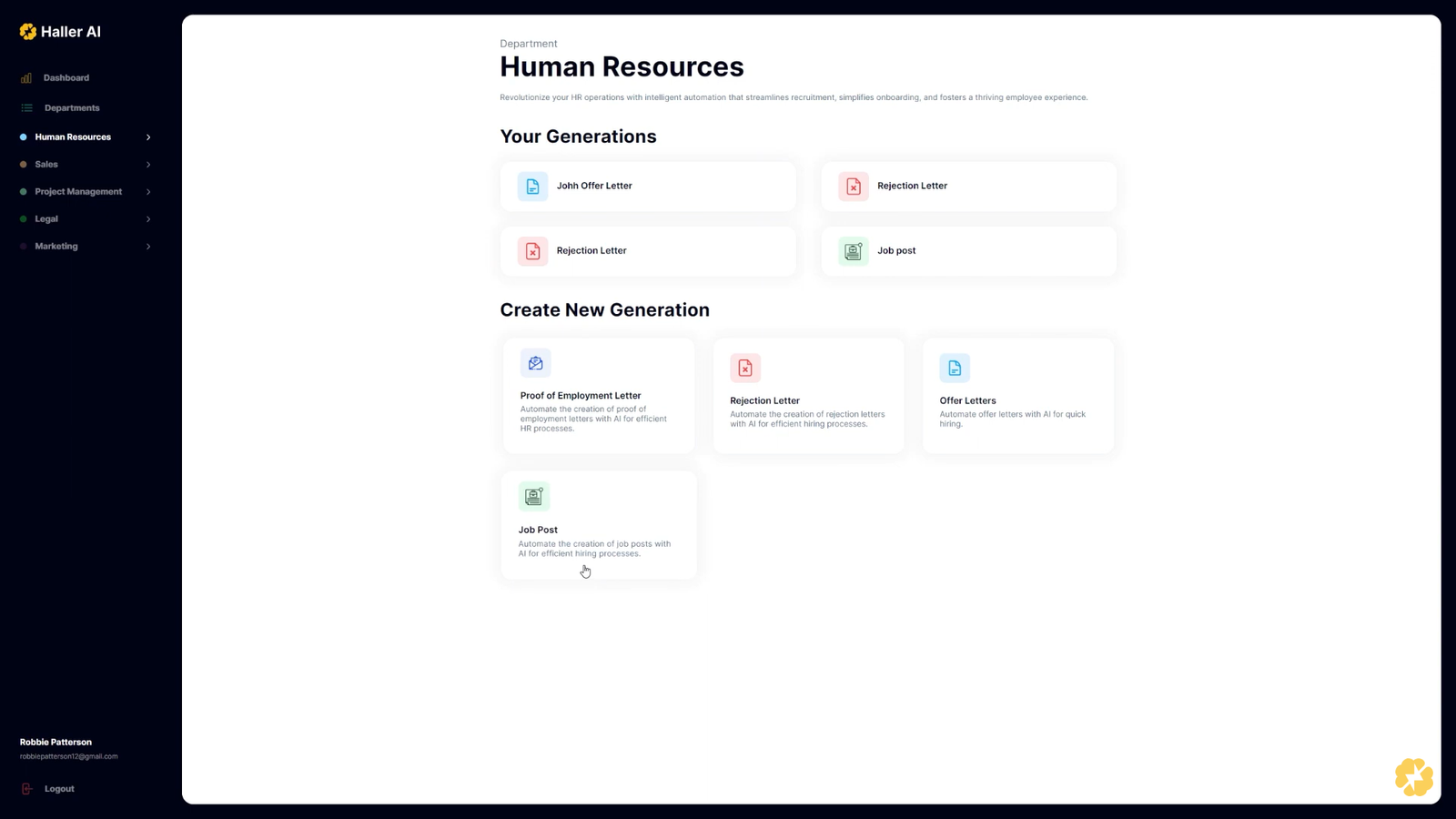Description
Key Features:
- AI-Powered Recruitment: Automates the candidate sourcing, screening, and matching processes to identify the best candidates efficiently.
- Employee Engagement Tools: Provides tools to measure and improve employee engagement through AI-driven surveys and feedback mechanisms.
- Performance Management: Utilizes AI to track and analyze employee performance, offering insights and recommendations for improvement.
- Workforce Analytics: Delivers deep analytics and insights into workforce data to help HR make informed decisions.
- Predictive Analytics: Uses historical data to predict employee turnover, performance outcomes, and other key HR metrics.
- Onboarding Automation: Streamlines the onboarding process for new hires, ensuring a smooth and engaging experience.
- Learning and Development: Offers personalized learning and development plans based on AI analysis of employee skills and career goals.
- Diversity and Inclusion Insights: Analyzes workforce diversity and inclusion metrics to help improve organizational culture and policies.
- Integration Capabilities: Seamlessly integrates with existing HR systems and tools for a unified workflow.
- Compliance Management: Helps ensure compliance with HR regulations and standards through automated monitoring and reporting.
Benefits:
- Efficiency: Reduces the time and effort required for HR tasks through automation and AI-driven processes.
- Improved Decision Making: Provides data-driven insights to support strategic HR decisions.
- Enhanced Employee Experience: Improves employee engagement and satisfaction through personalized tools and feedback mechanisms.
- Cost Savings: Reduces costs associated with manual HR processes and inefficiencies.
- Scalability: Suitable for organizations of all sizes, enabling them to scale HR operations effectively.
- Better Talent Management: Enhances the ability to attract, retain, and develop top talent.
- Increased Compliance: Helps maintain compliance with regulatory requirements, reducing legal risks.
- Diversity and Inclusion: Supports the creation of a more diverse and inclusive workplace.
Target Audience:
- HR Professionals: HR teams looking to optimize their processes and improve efficiency.
- Large Enterprises: Corporations seeking to manage large workforces and complex HR needs.
- Small and Medium Enterprises: SMEs needing scalable and cost-effective HR solutions.
- Recruitment Agencies: Agencies aiming to enhance their candidate sourcing and placement services.
- Learning and Development Teams: Teams focused on employee training and career development.
- Compliance Officers: Professionals responsible for ensuring HR regulatory compliance.
- Diversity and Inclusion Officers: Individuals dedicated to fostering a diverse and inclusive workplace.
- Talent Acquisition Teams: Teams tasked with sourcing and hiring top talent in competitive industries.
Use Cases:
Problem Statement:
Businesses often struggle with effectively analyzing and interpreting large datasets, which hampers their ability to make informed decisions and improve operational efficiencies.
Application:
Haller AI uses advanced machine learning algorithms to analyze vast amounts of data quickly and accurately. The tool provides insights and visualizations, helping businesses to understand trends, predict outcomes, and make data-driven decisions. It also offers automation of repetitive data processing tasks, allowing teams to focus on strategic activities.
Outcome:
- Enhanced decision-making with accurate data insights.
- Increased operational efficiency by automating data analysis tasks.
- Better trend prediction and outcome forecasting.
- Improved data accuracy and reliability.
Industry Examples:
- Finance: Financial institutions use Haller AI to analyze market trends, forecast stock prices, and manage risks, leading to better investment decisions and risk management.
- Healthcare: Healthcare providers utilize Haller AI to analyze patient data, predict disease outbreaks, and optimize treatment plans, resulting in improved patient outcomes and operational efficiency.
- Retail: Retail companies leverage Haller AI to analyze consumer behavior, manage inventory, and optimize pricing strategies, enhancing customer satisfaction and profitability.
- Telecommunications: Telecom companies employ Haller AI to analyze network data, predict service disruptions, and improve customer support, leading to enhanced service delivery and customer satisfaction.
- Manufacturing: Manufacturers use Haller AI to optimize production processes, predict equipment failures, and manage supply chains more effectively, resulting in reduced downtime and improved productivity.
Additional Scenarios:
- Education: Educational institutions can use Haller AI to analyze student performance data, identify learning patterns, and personalize educational content, improving student outcomes.
- Government: Government agencies can utilize Haller AI to analyze public data, improve policy-making processes, and enhance public services.
- Energy: Energy companies can use Haller AI to monitor and analyze energy consumption patterns, optimize resource management, and predict maintenance needs.
- Marketing: Marketing firms can leverage Haller AI to analyze campaign performance, understand consumer preferences, and optimize marketing strategies.
- Logistics: Logistics companies can use Haller AI to optimize route planning, manage deliveries more efficiently, and reduce operational costs.






Reviews
There are no reviews yet.